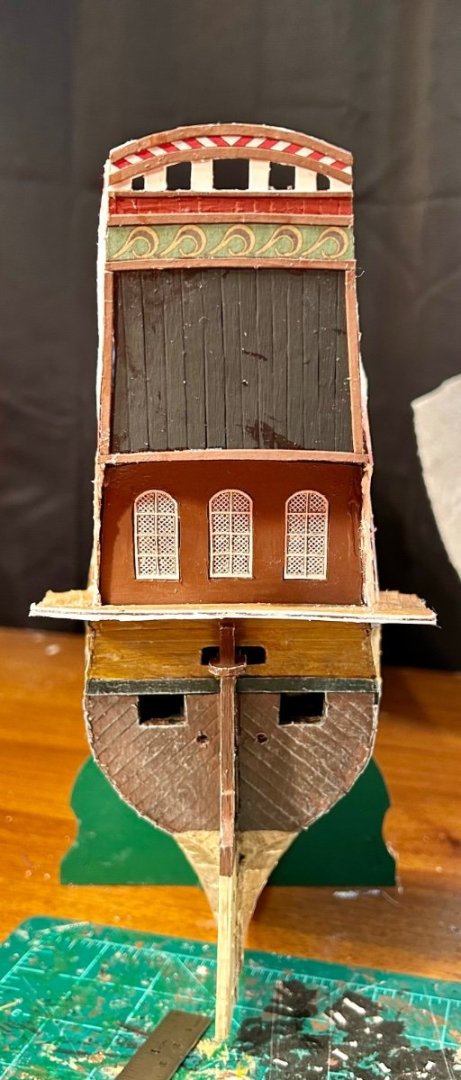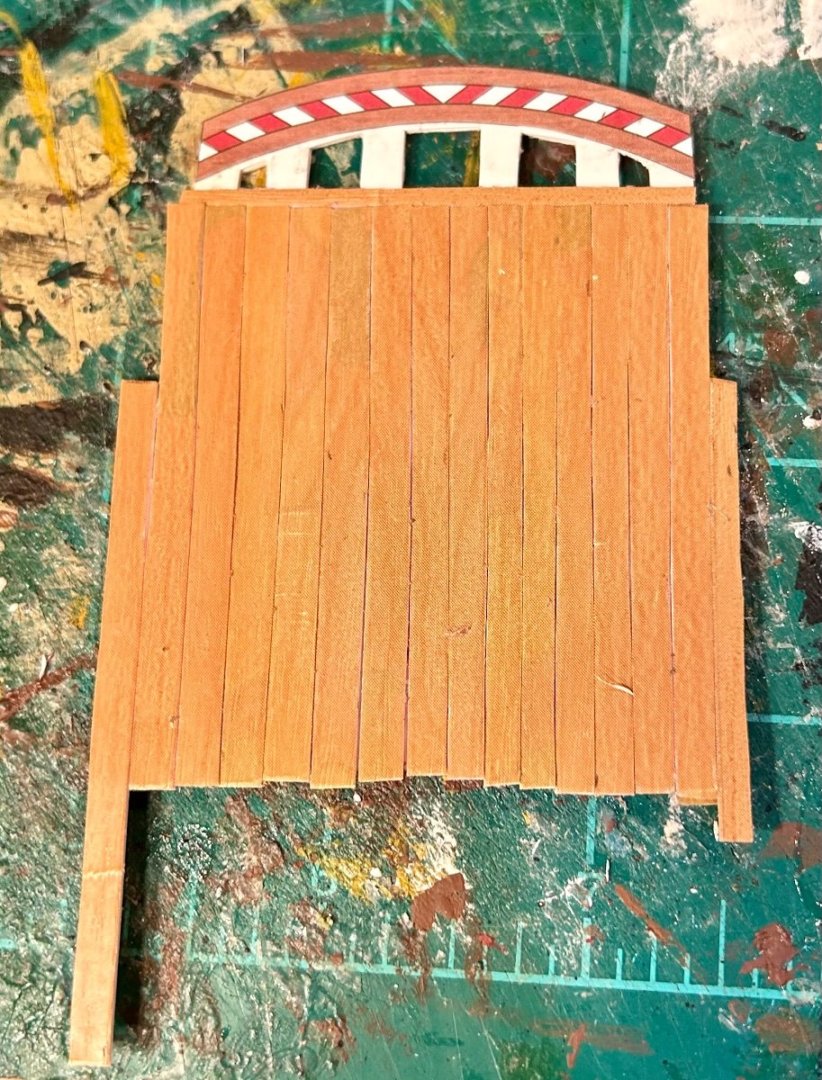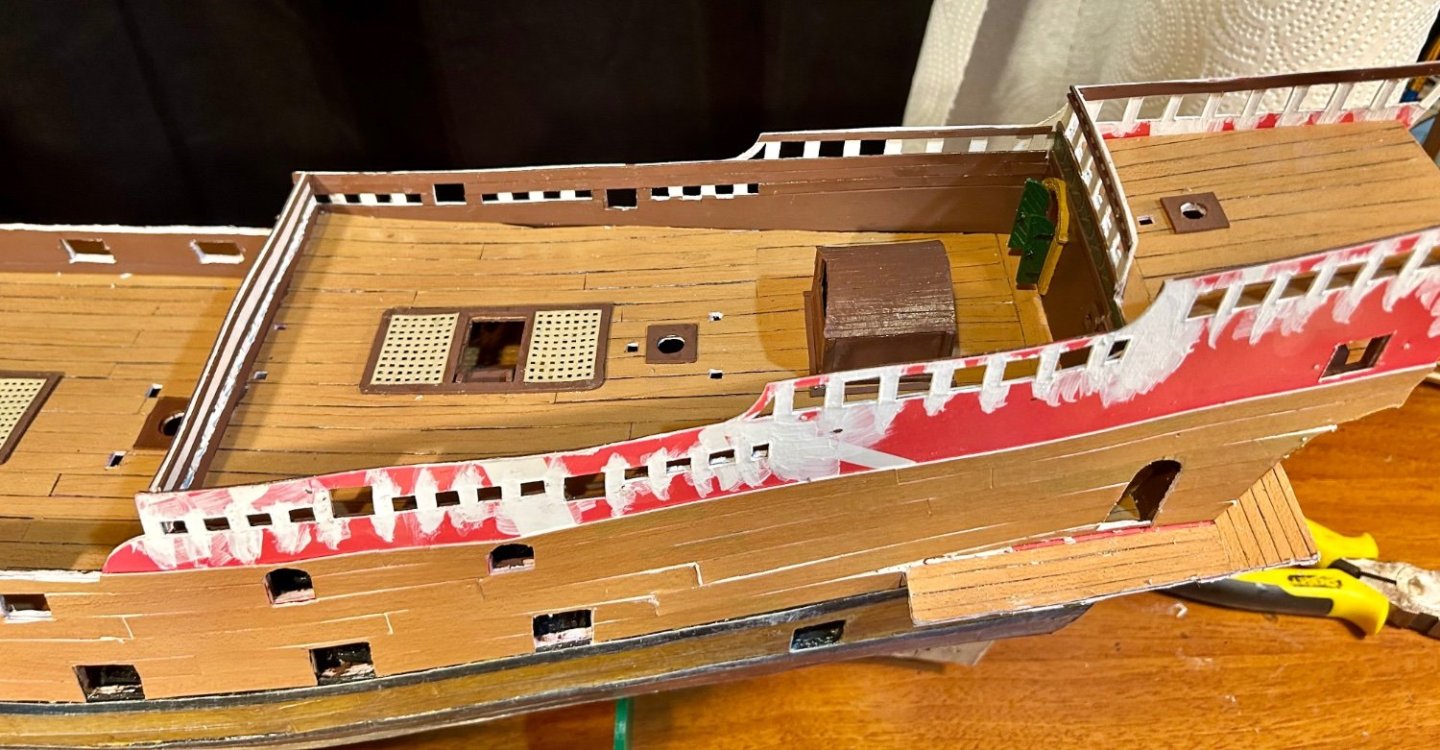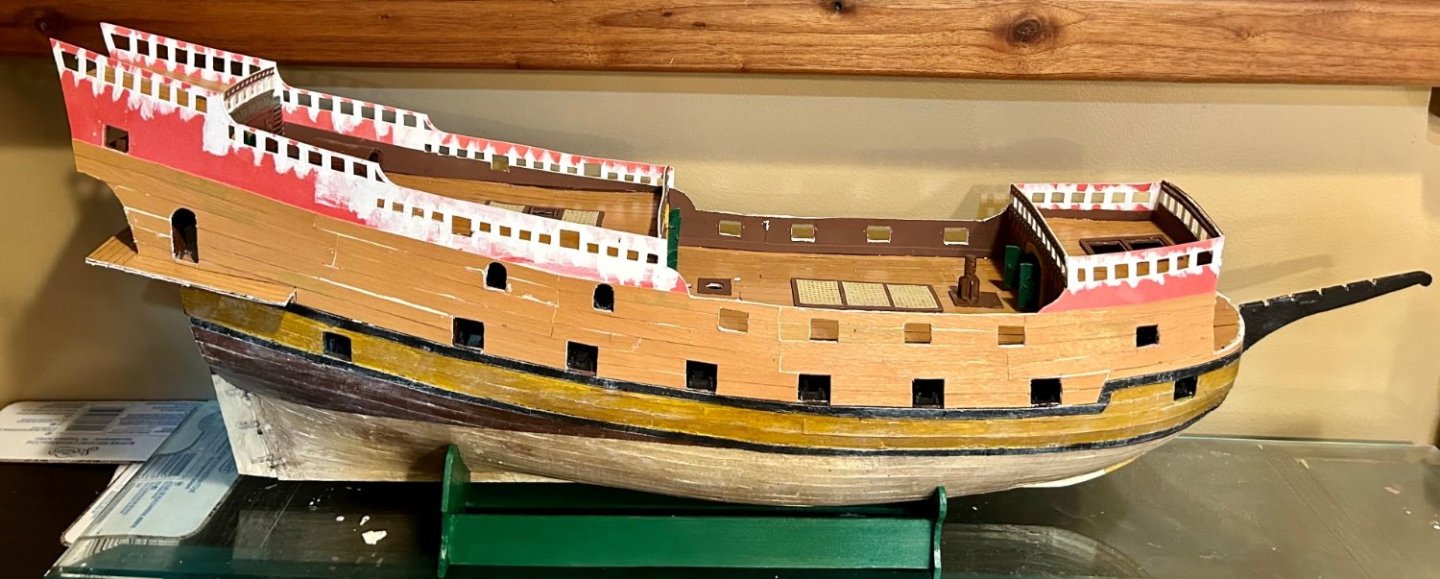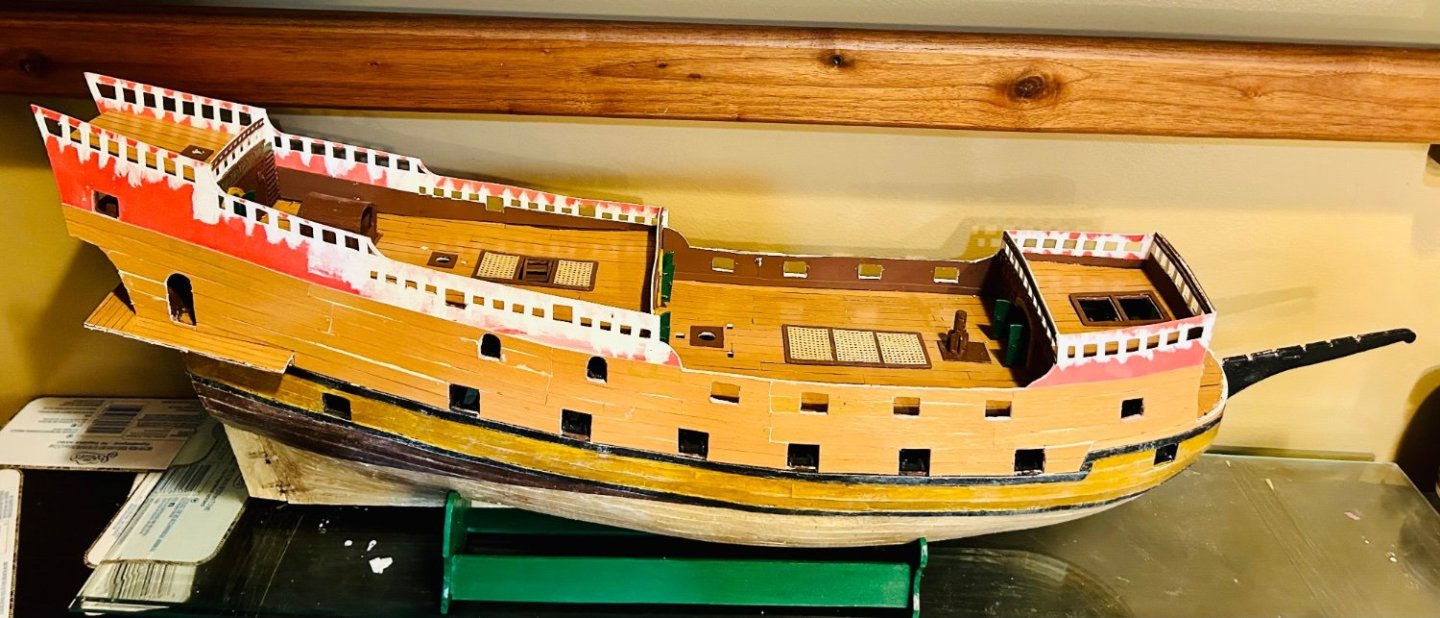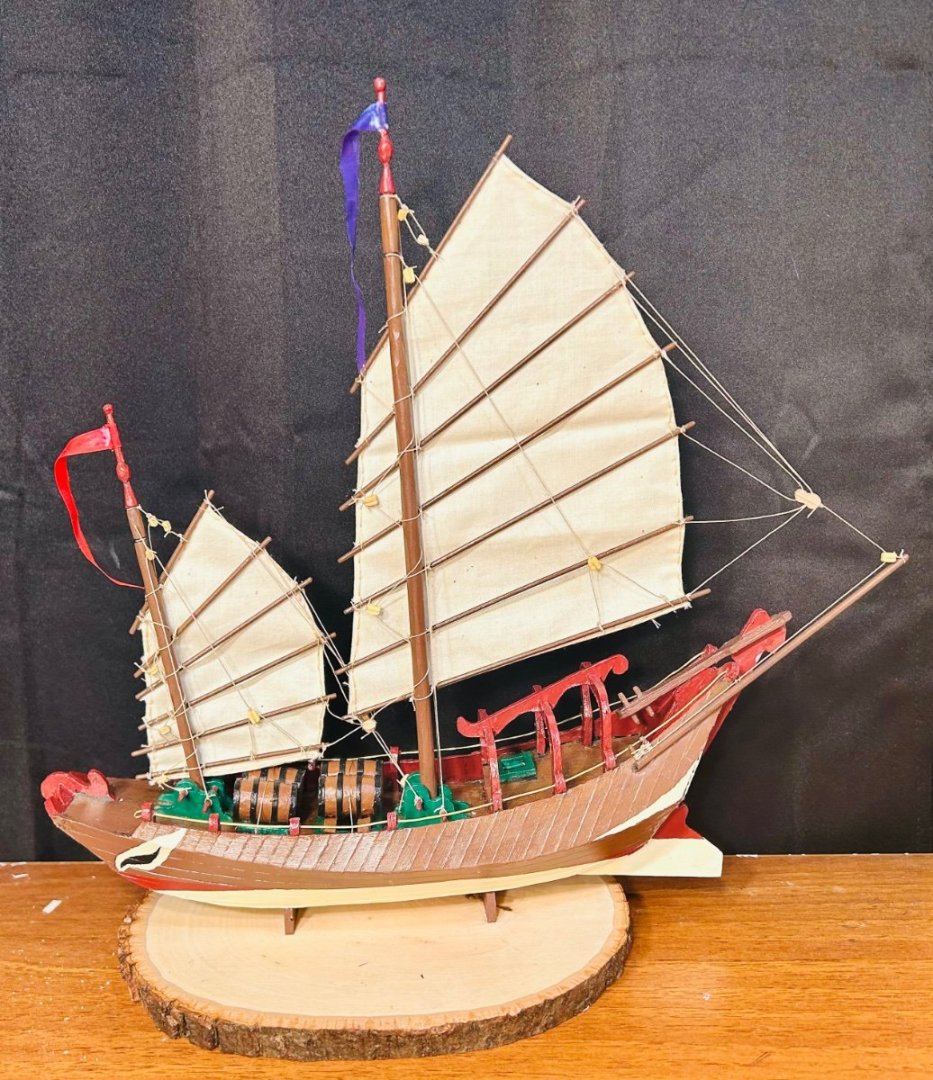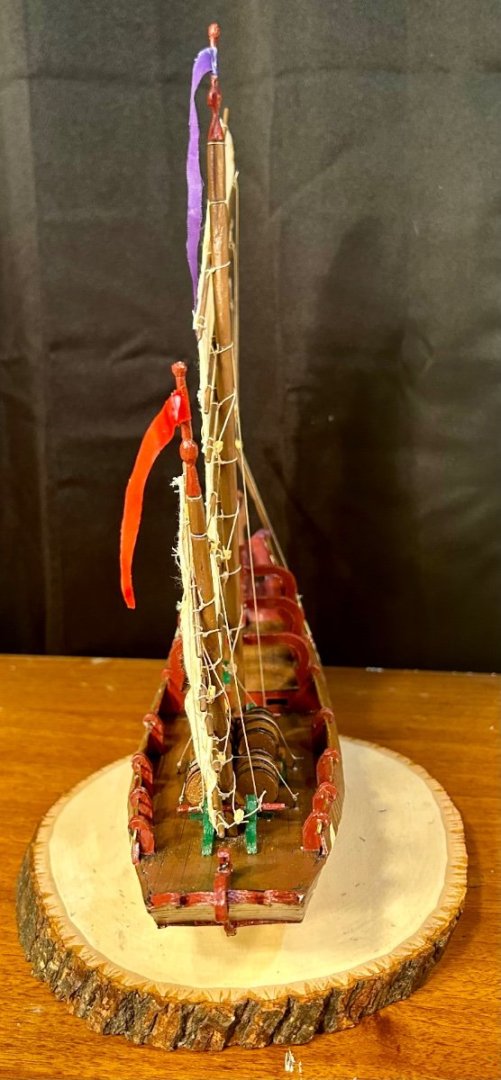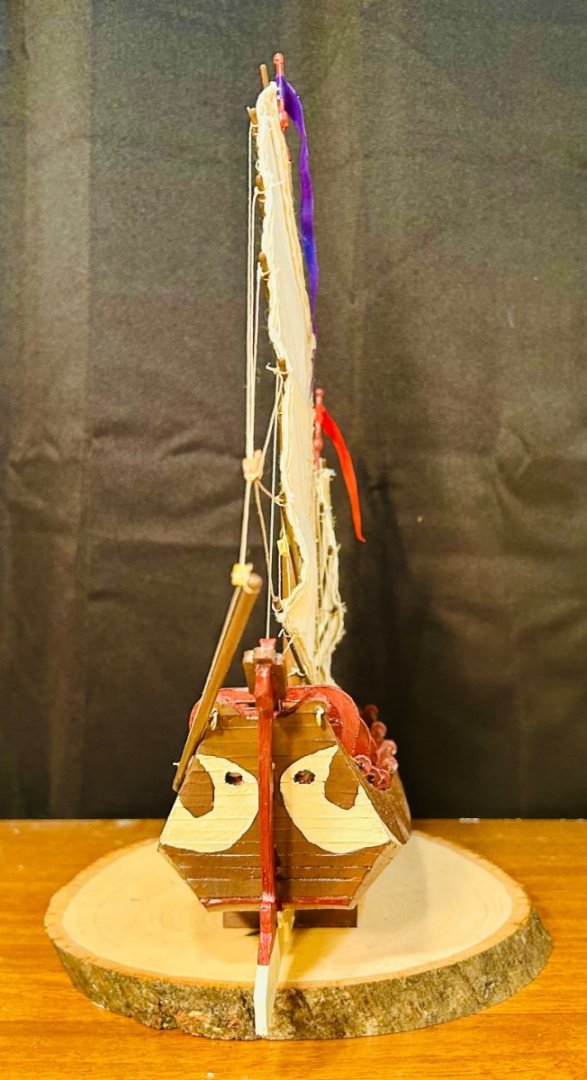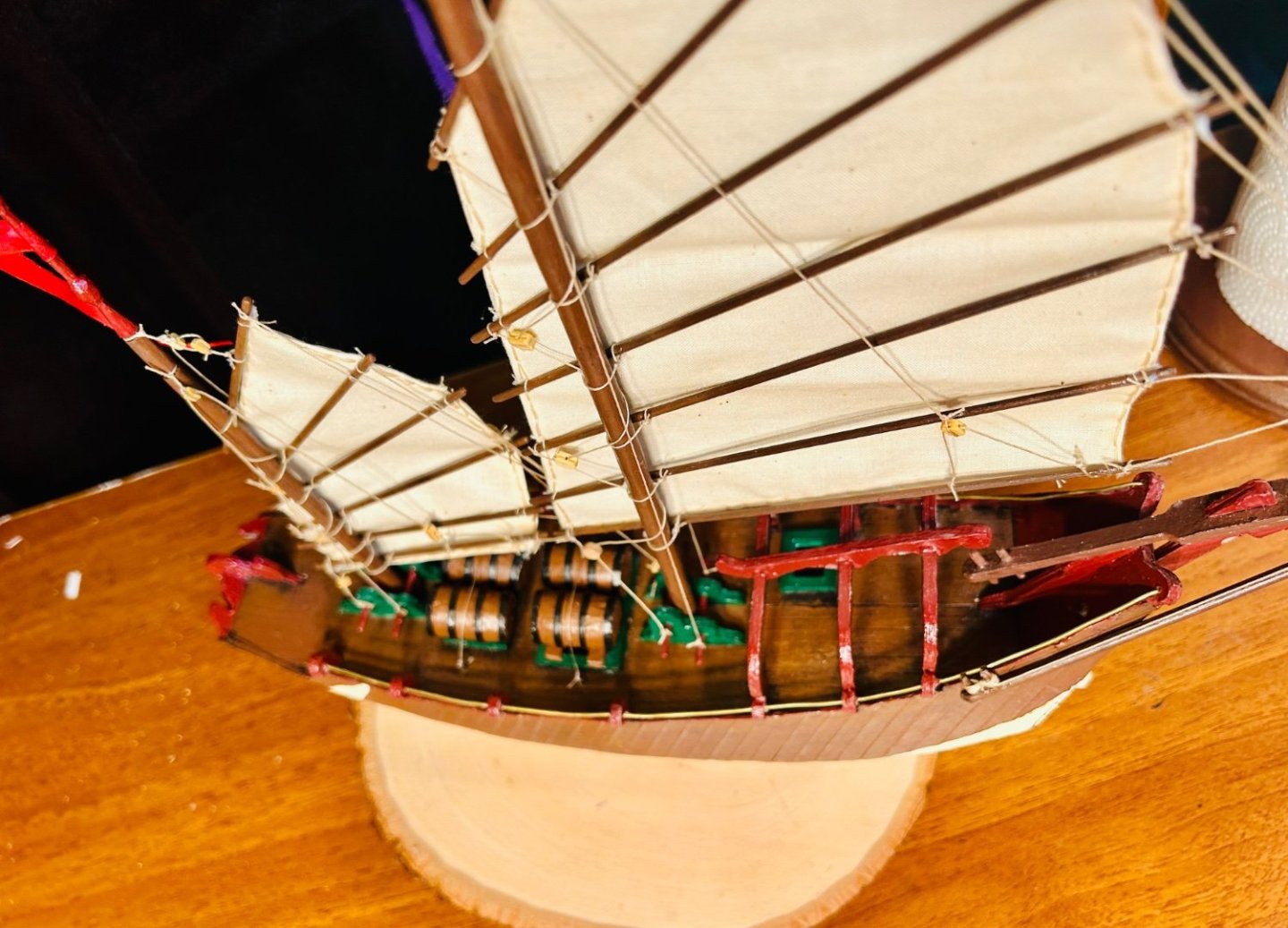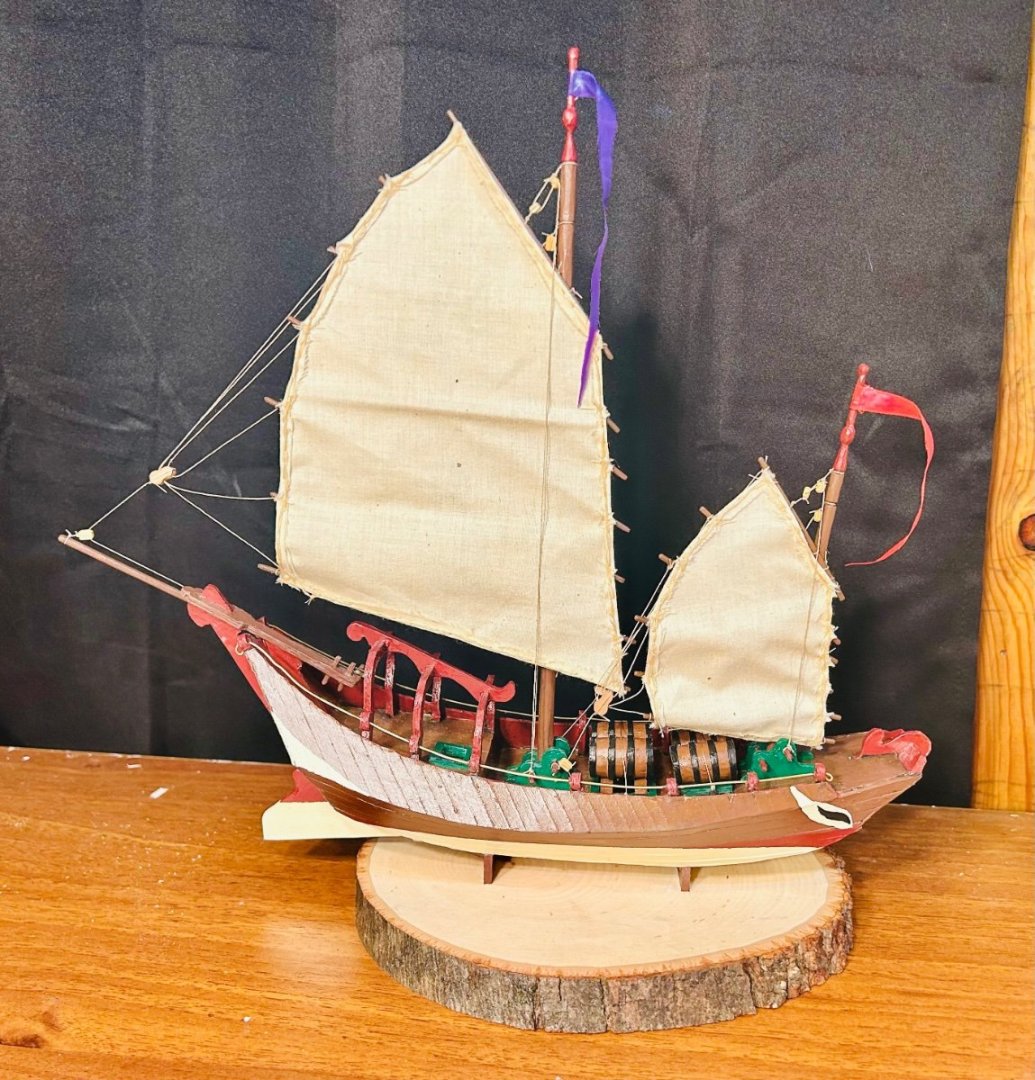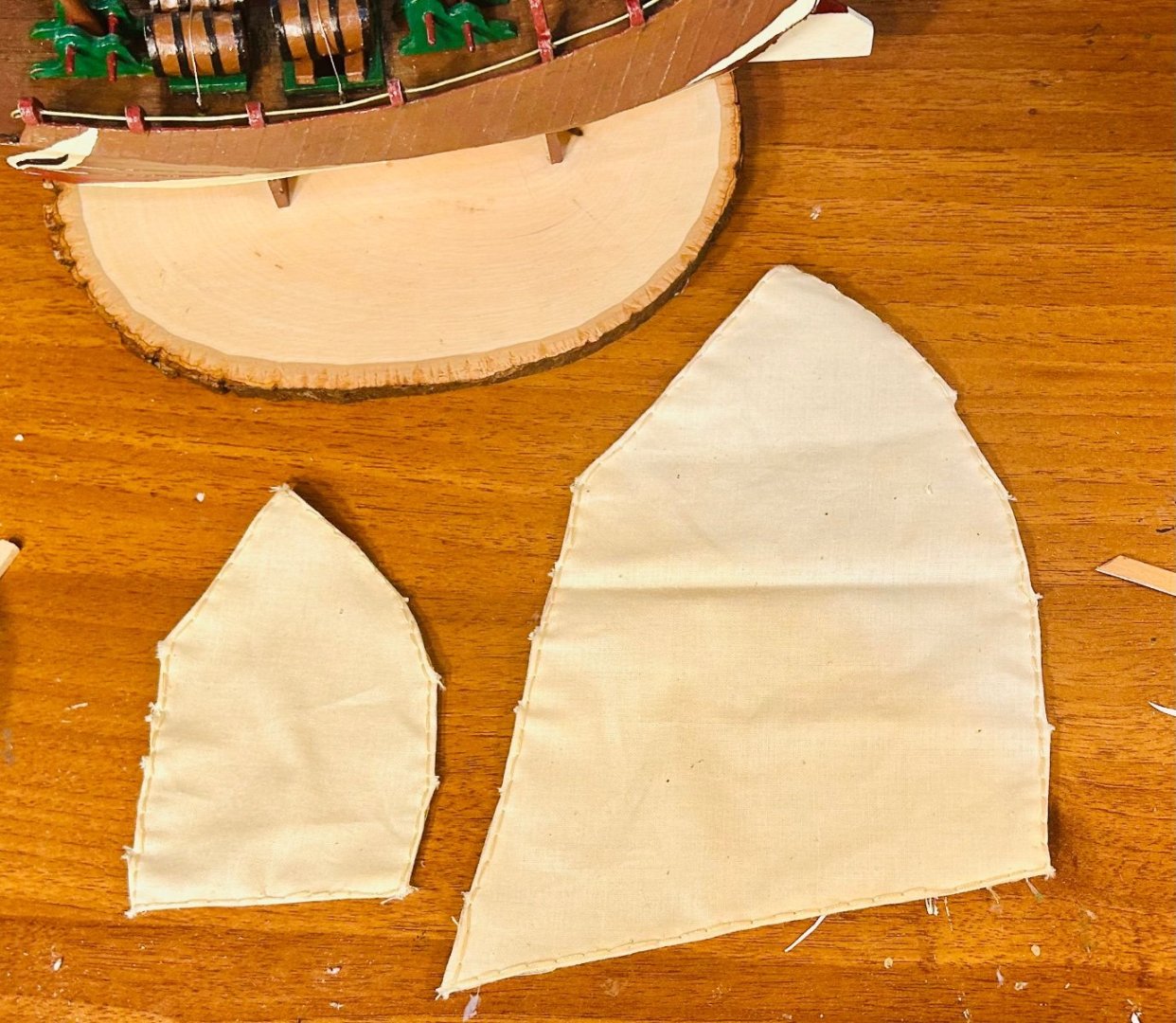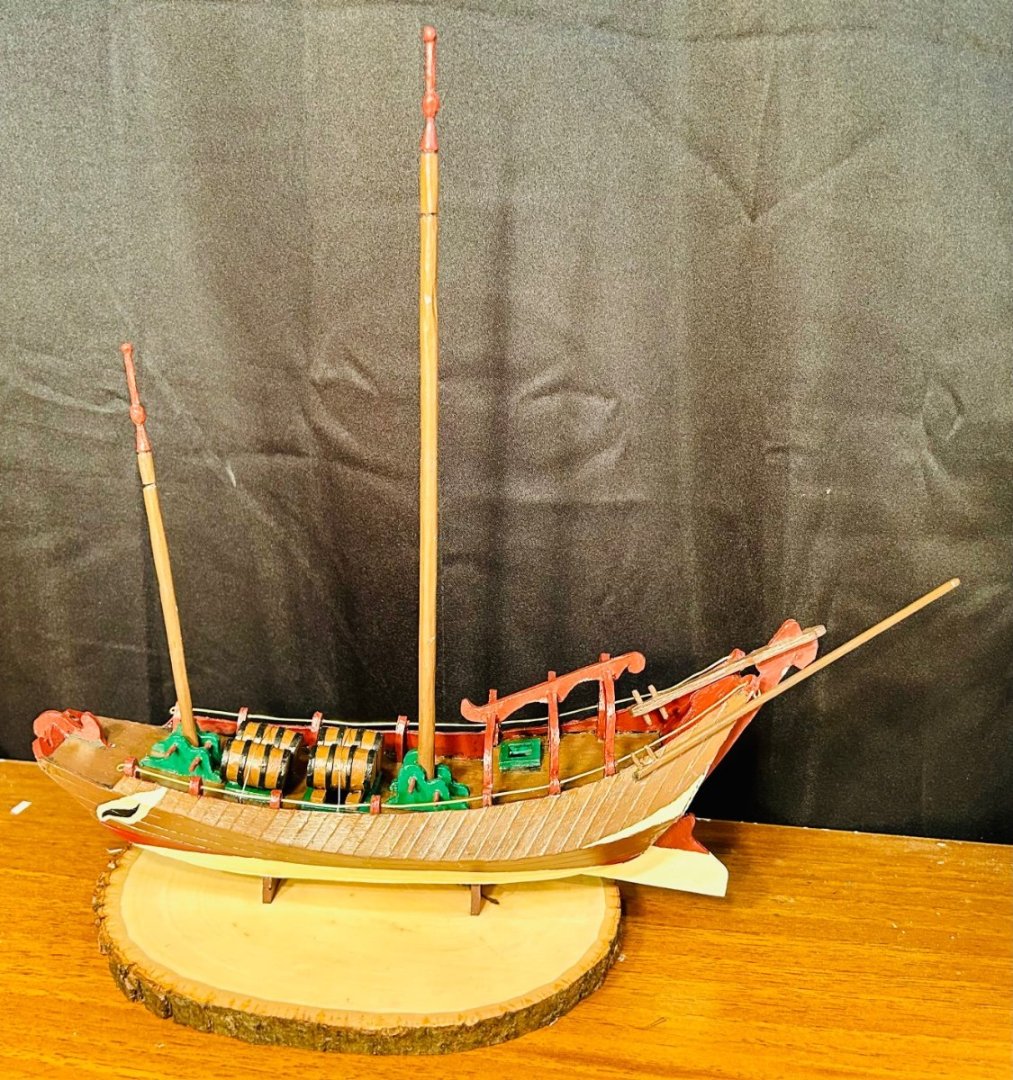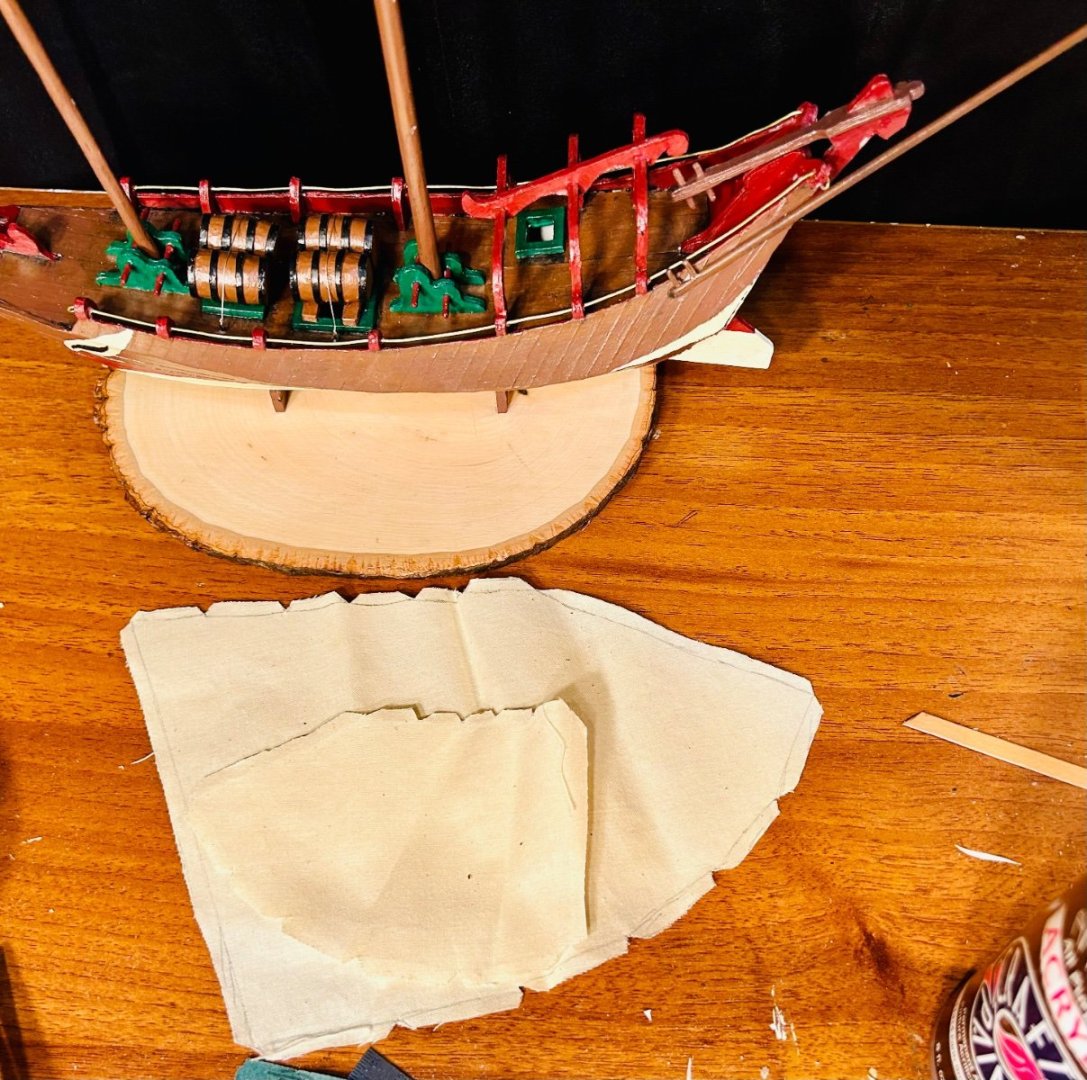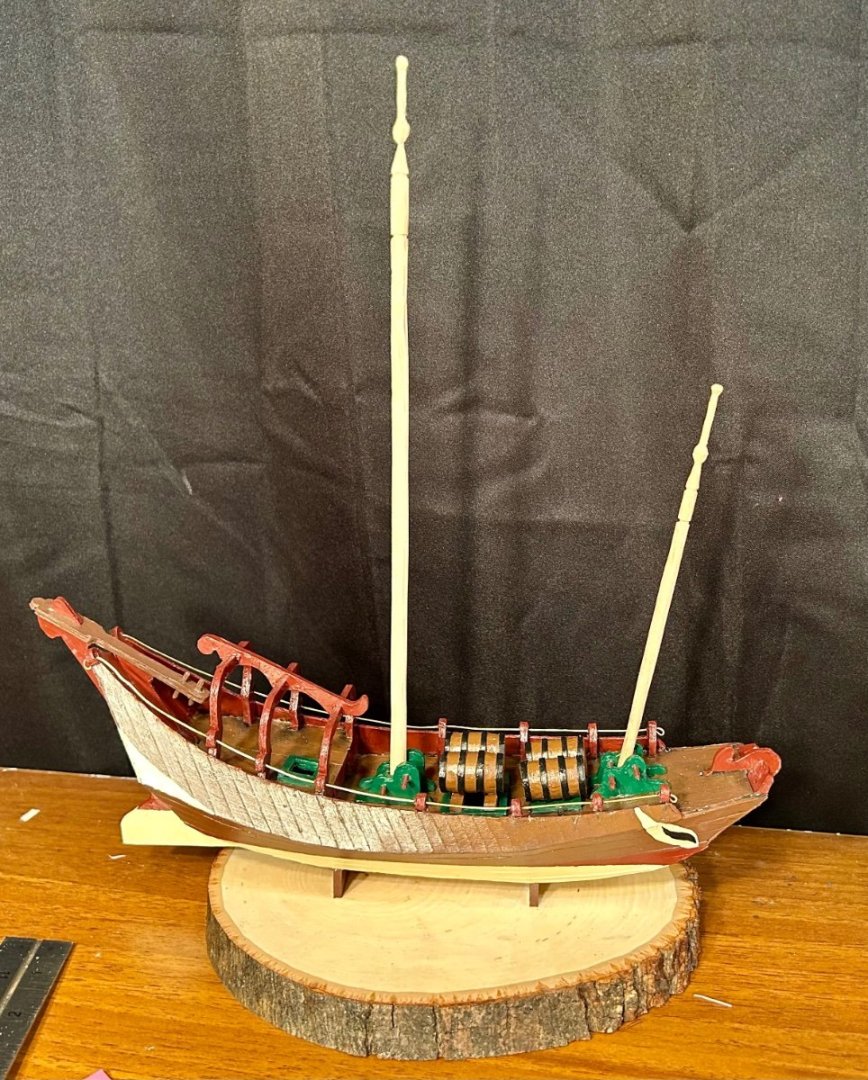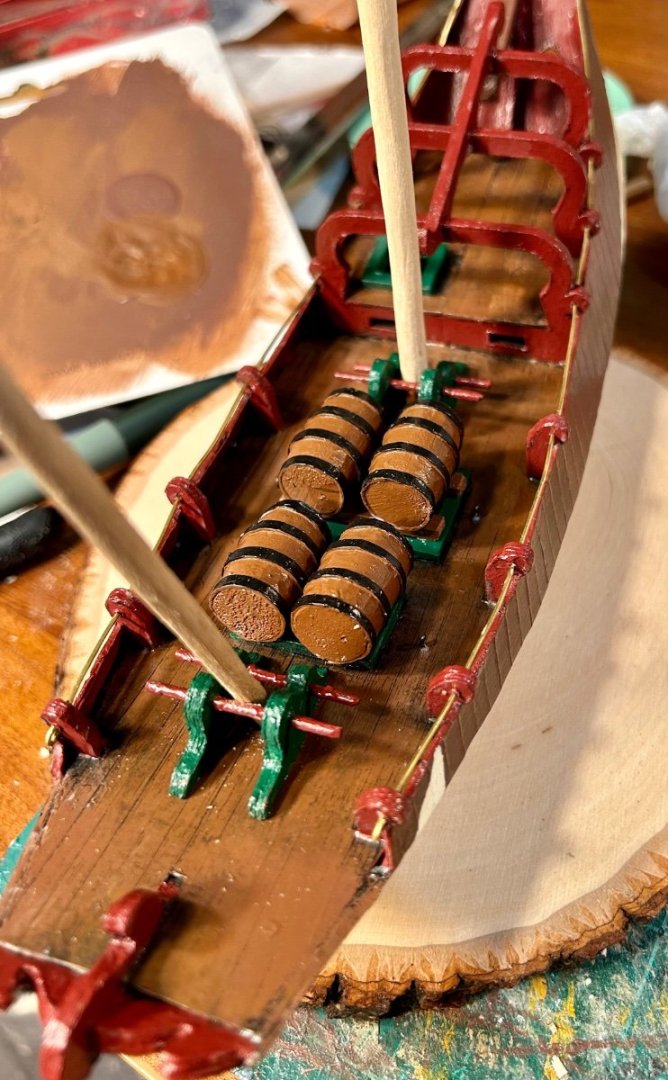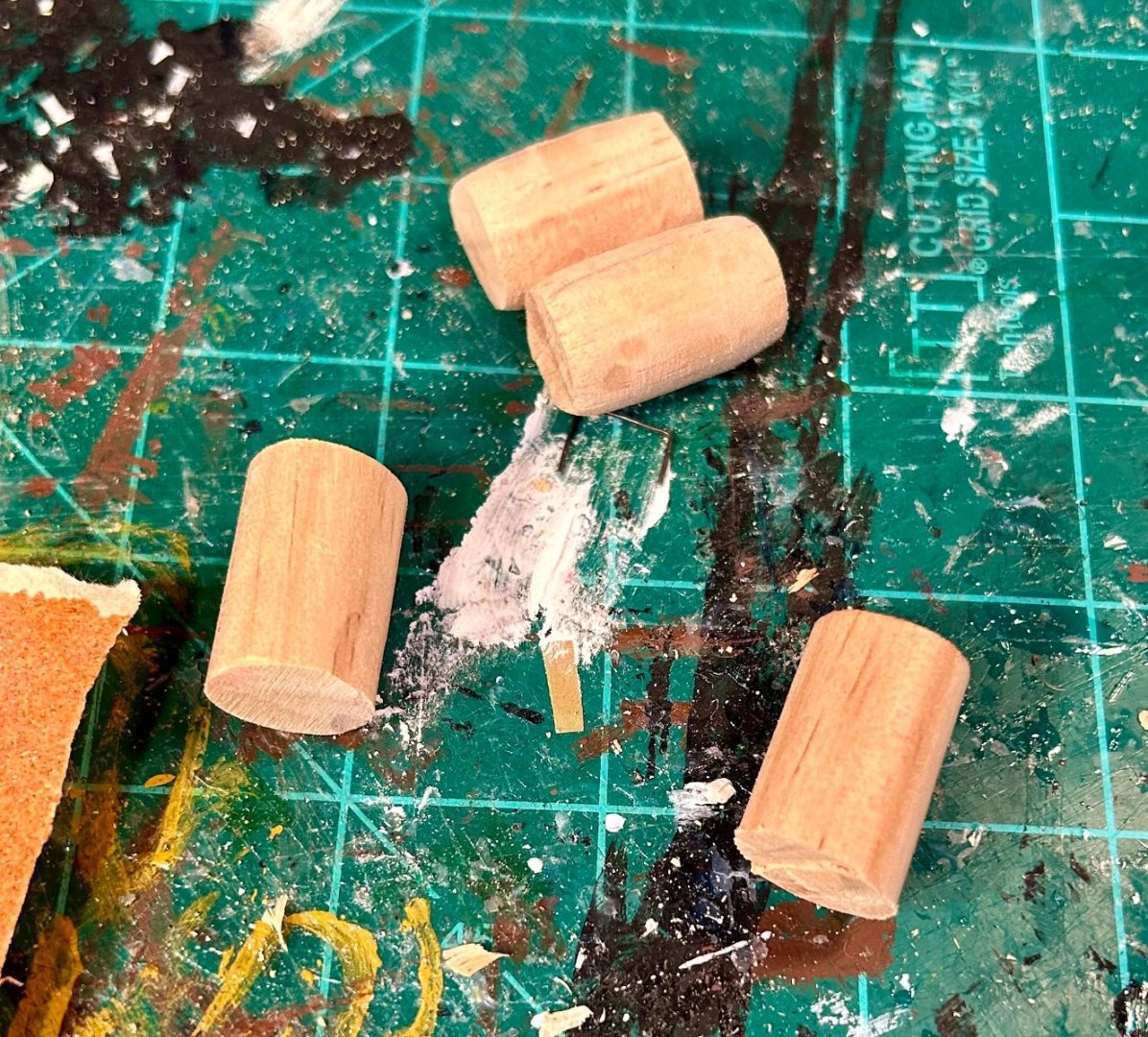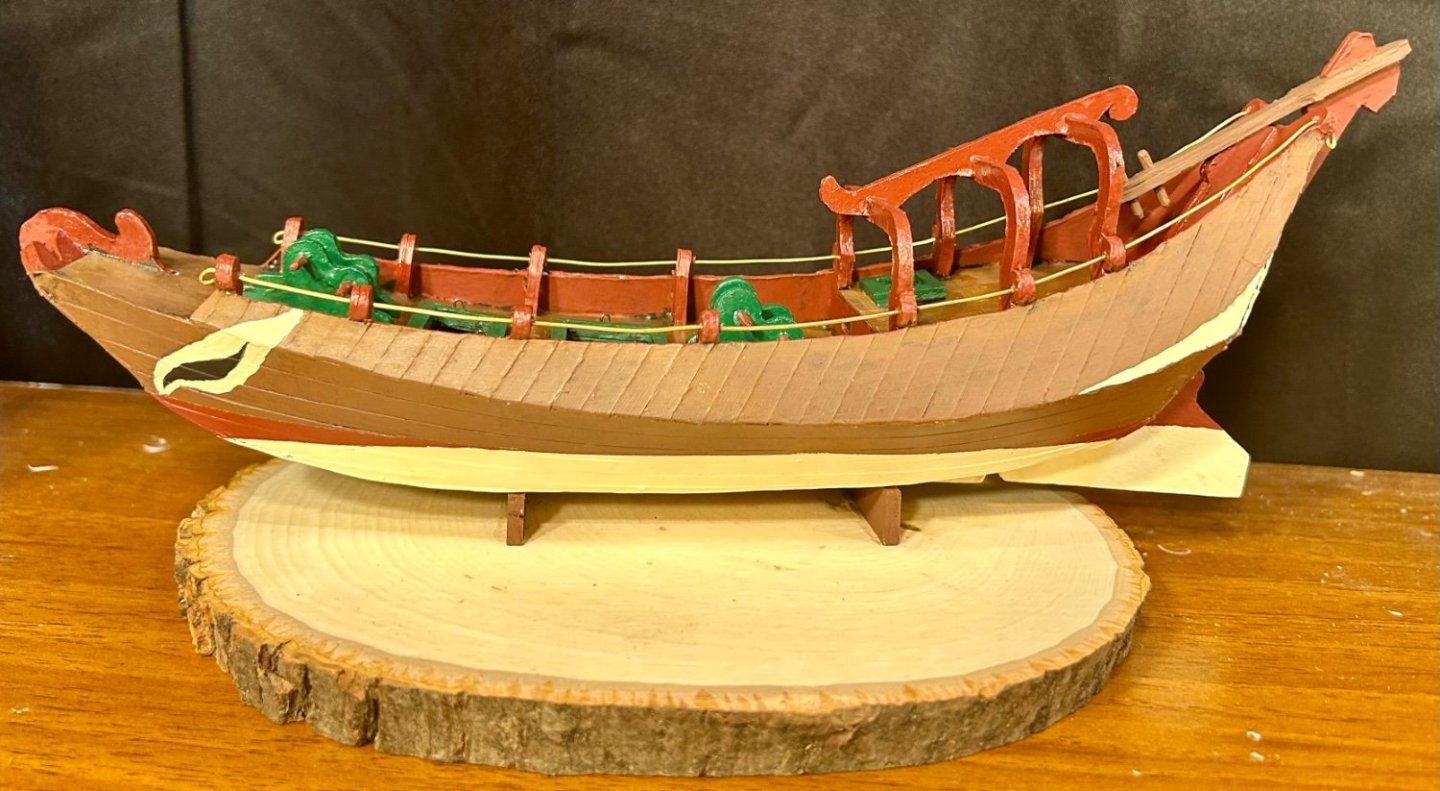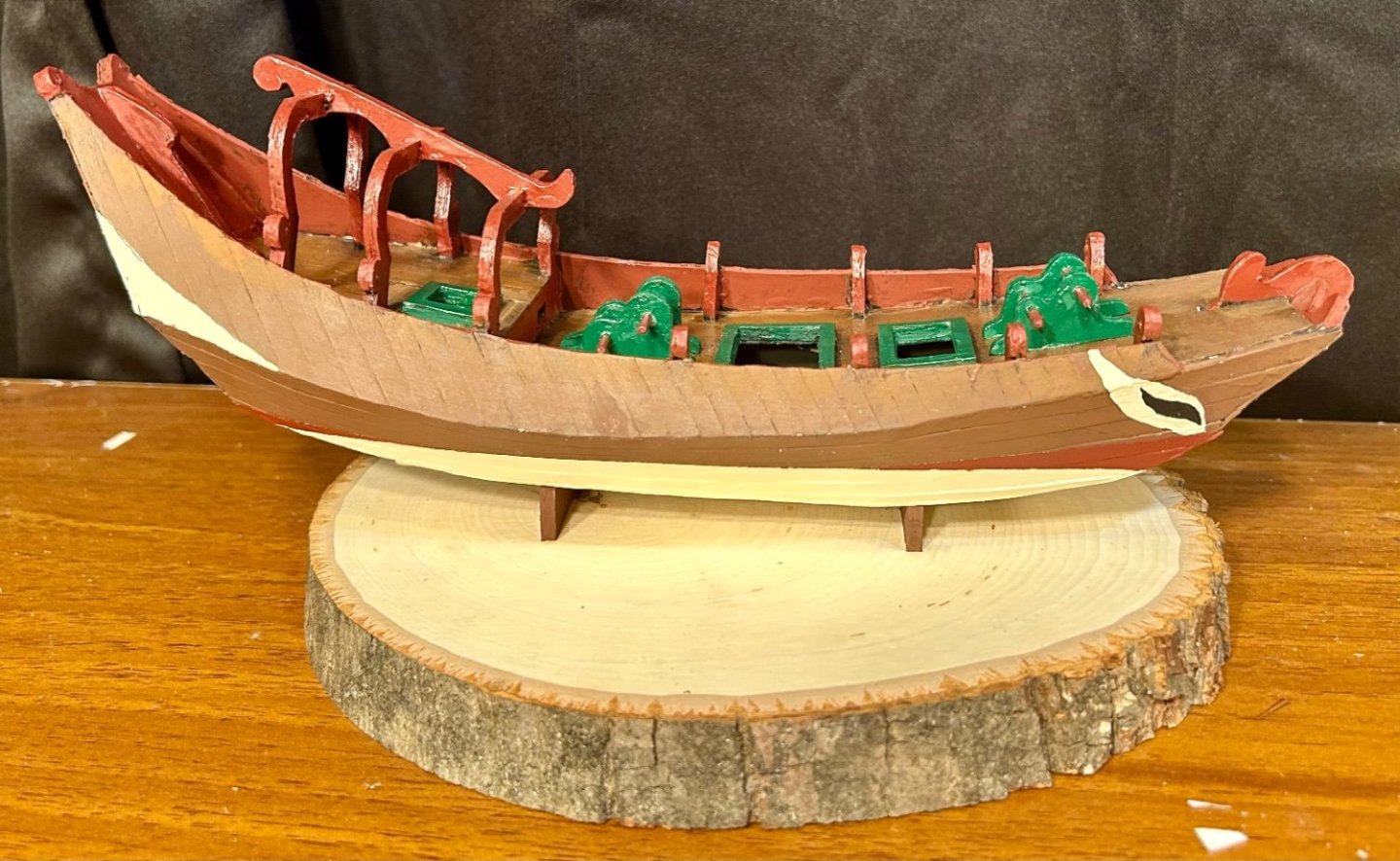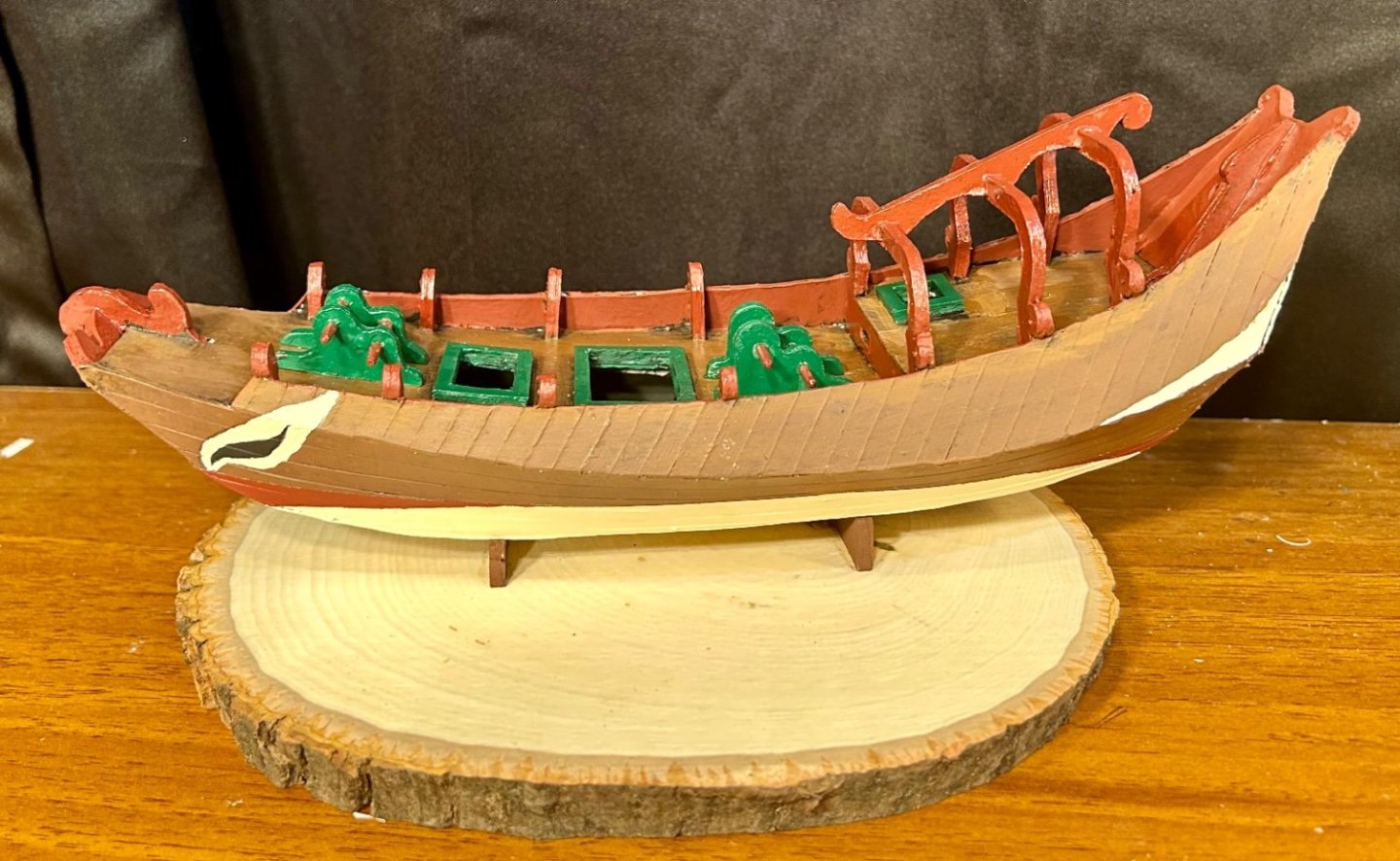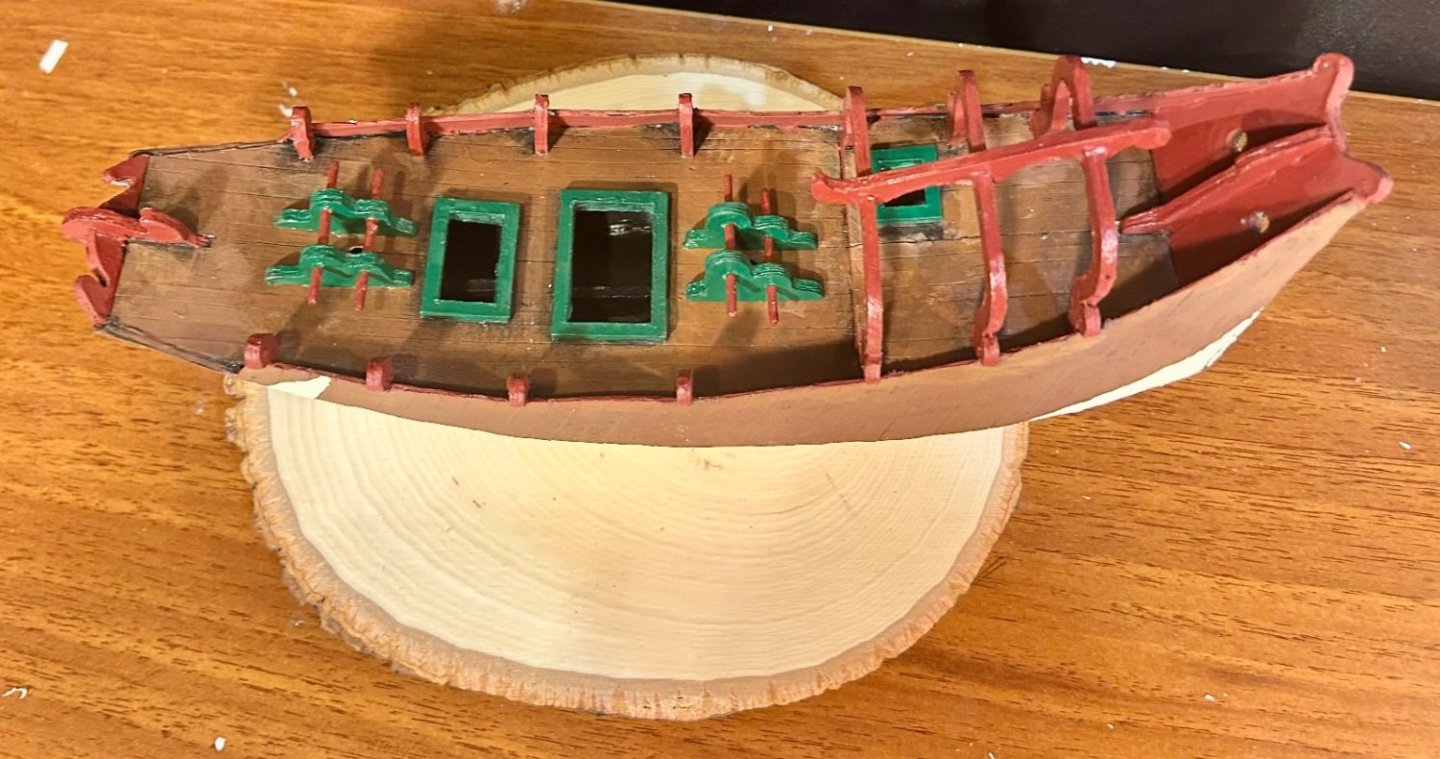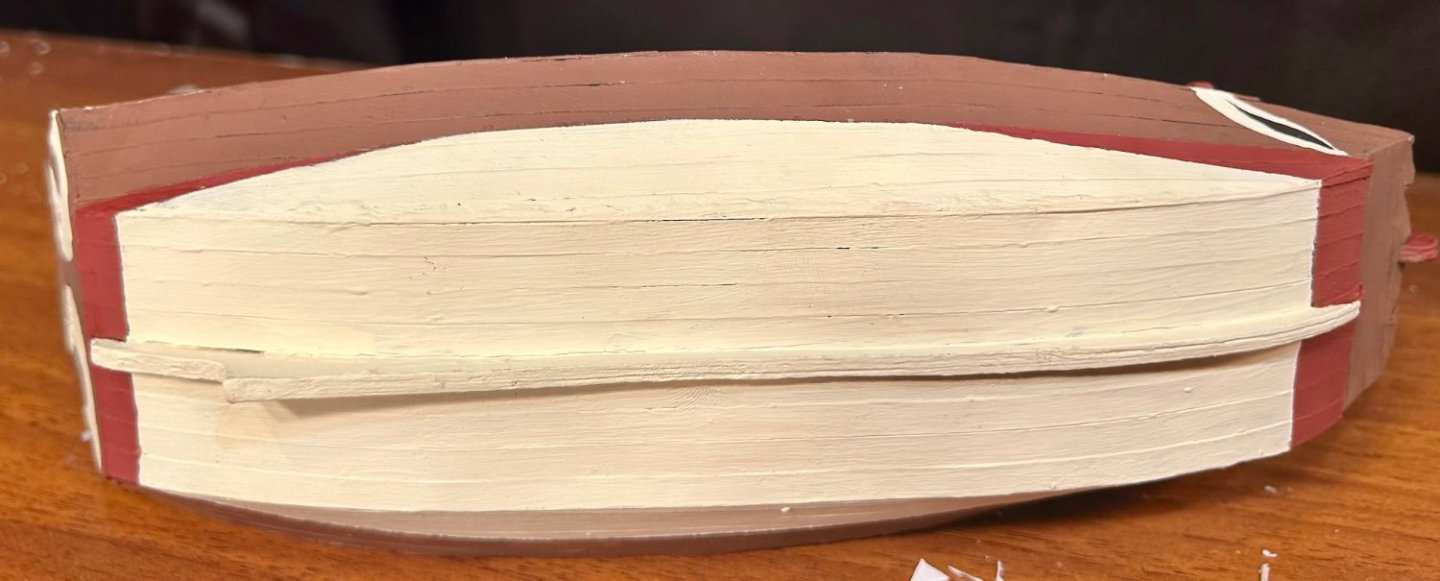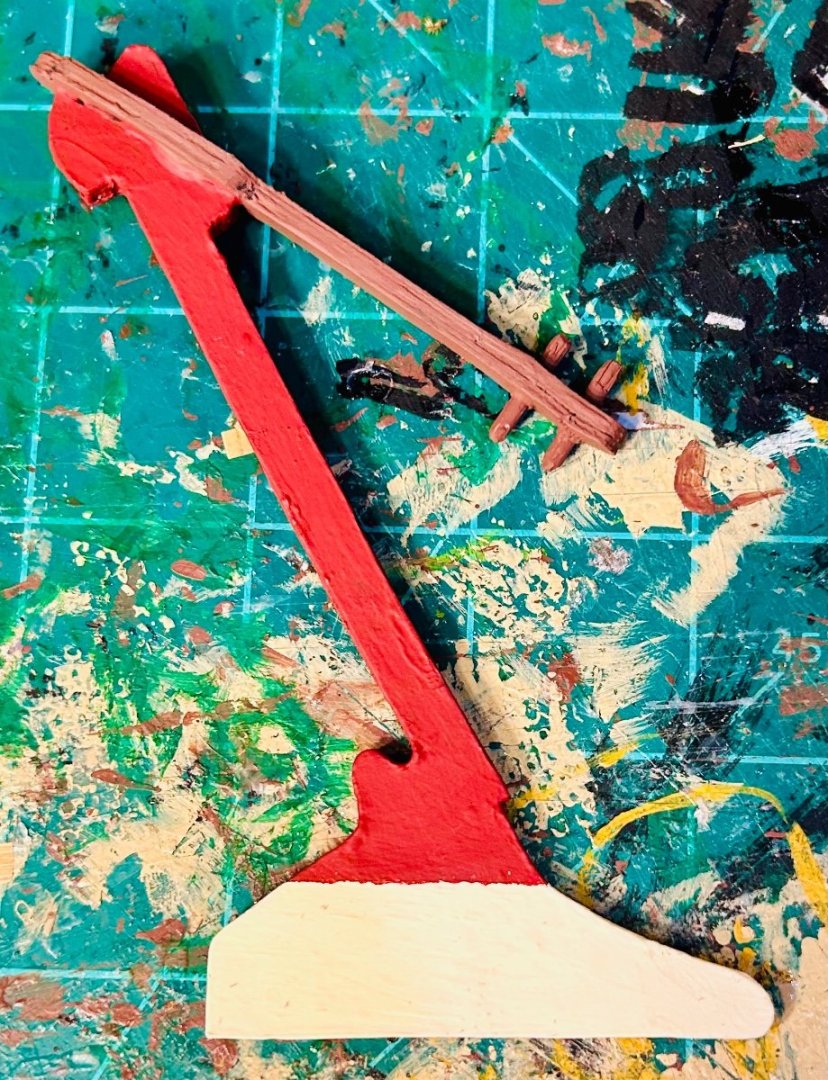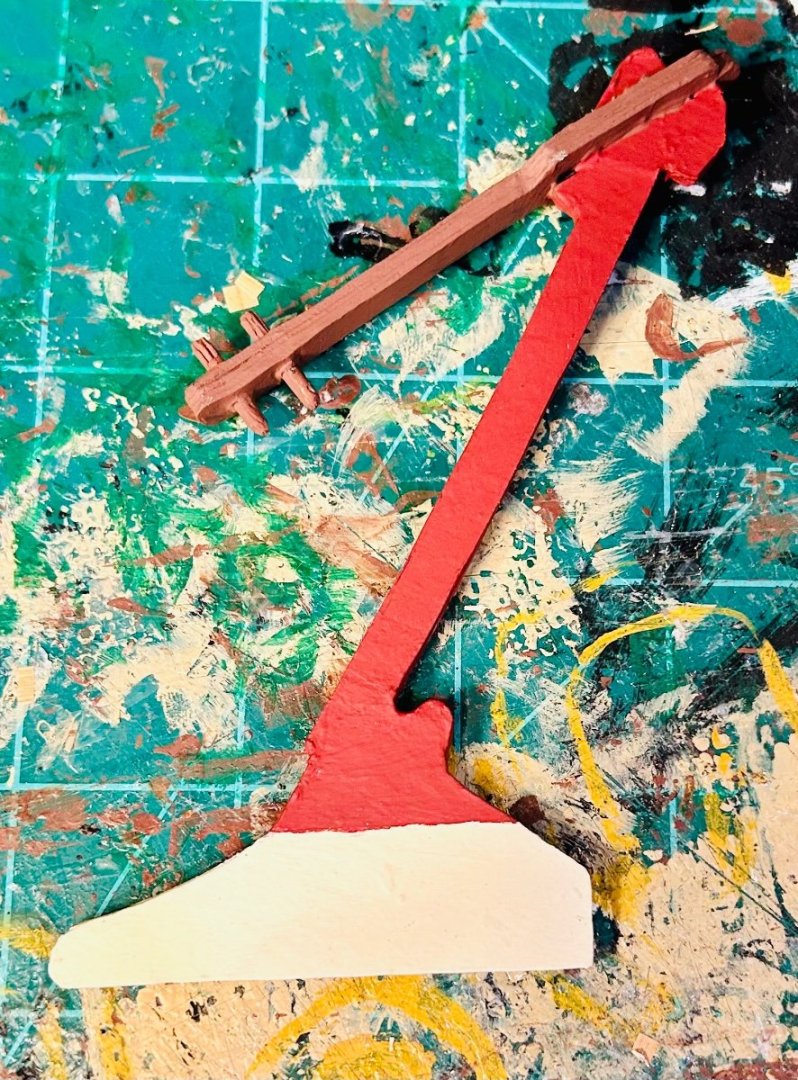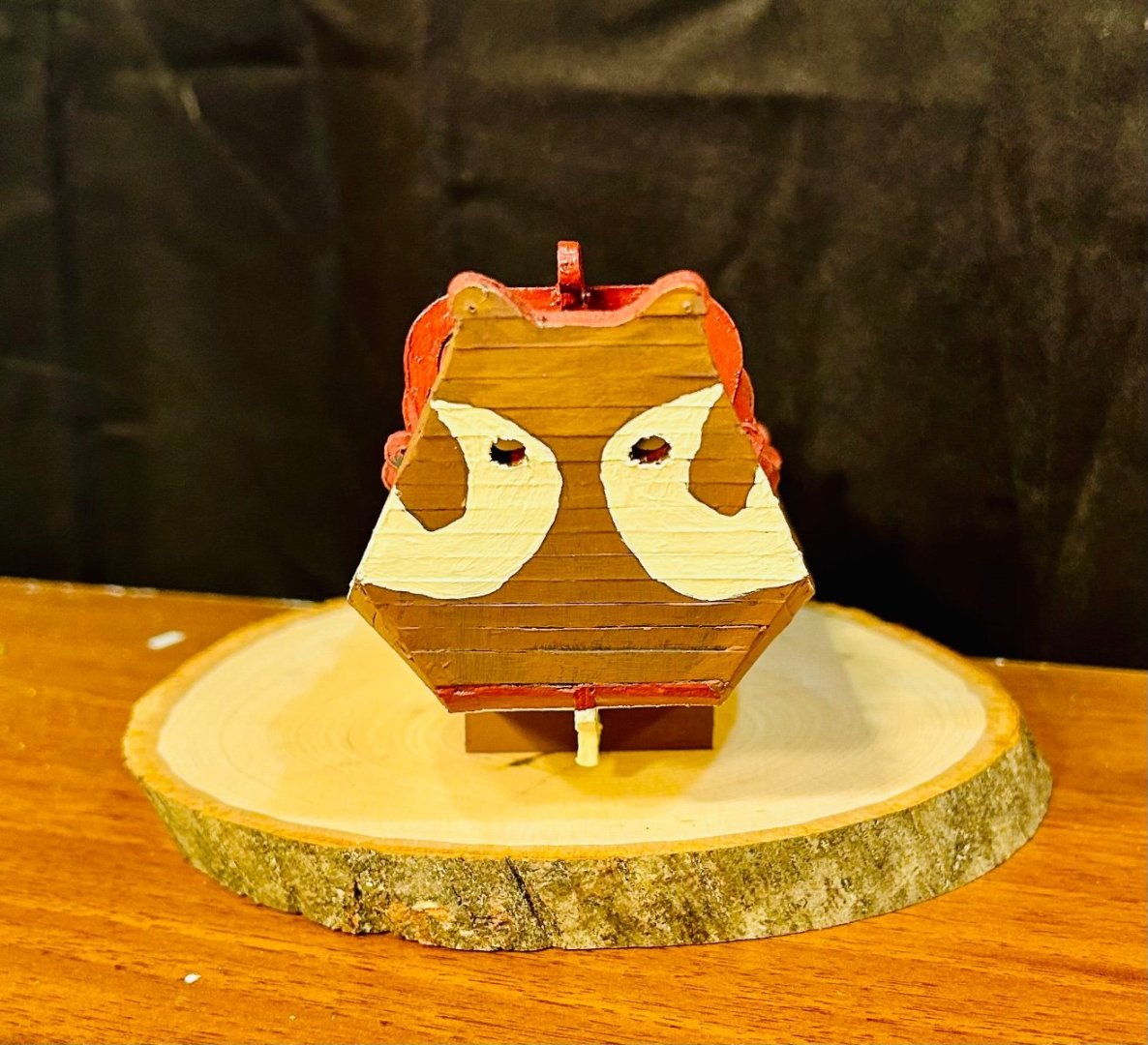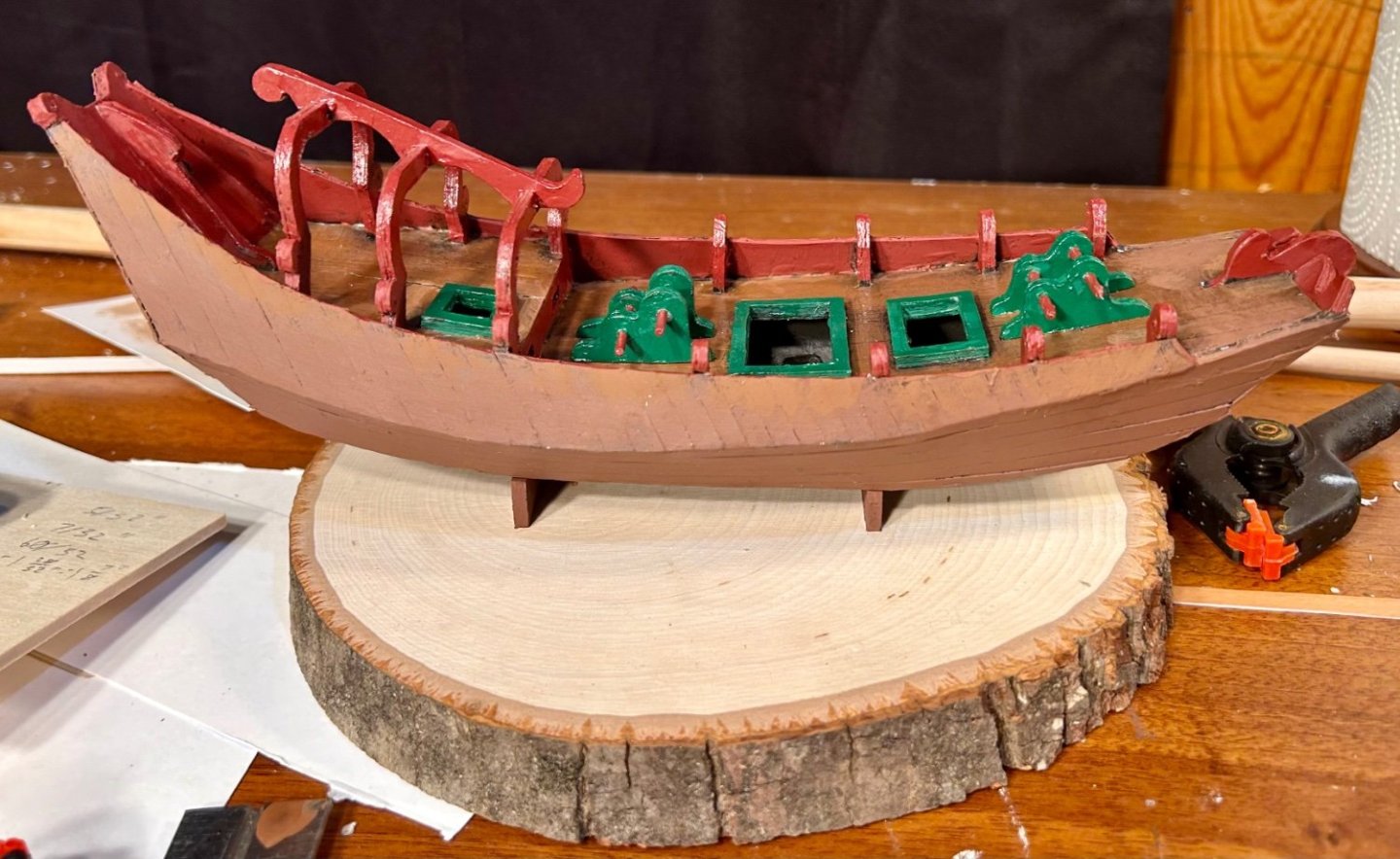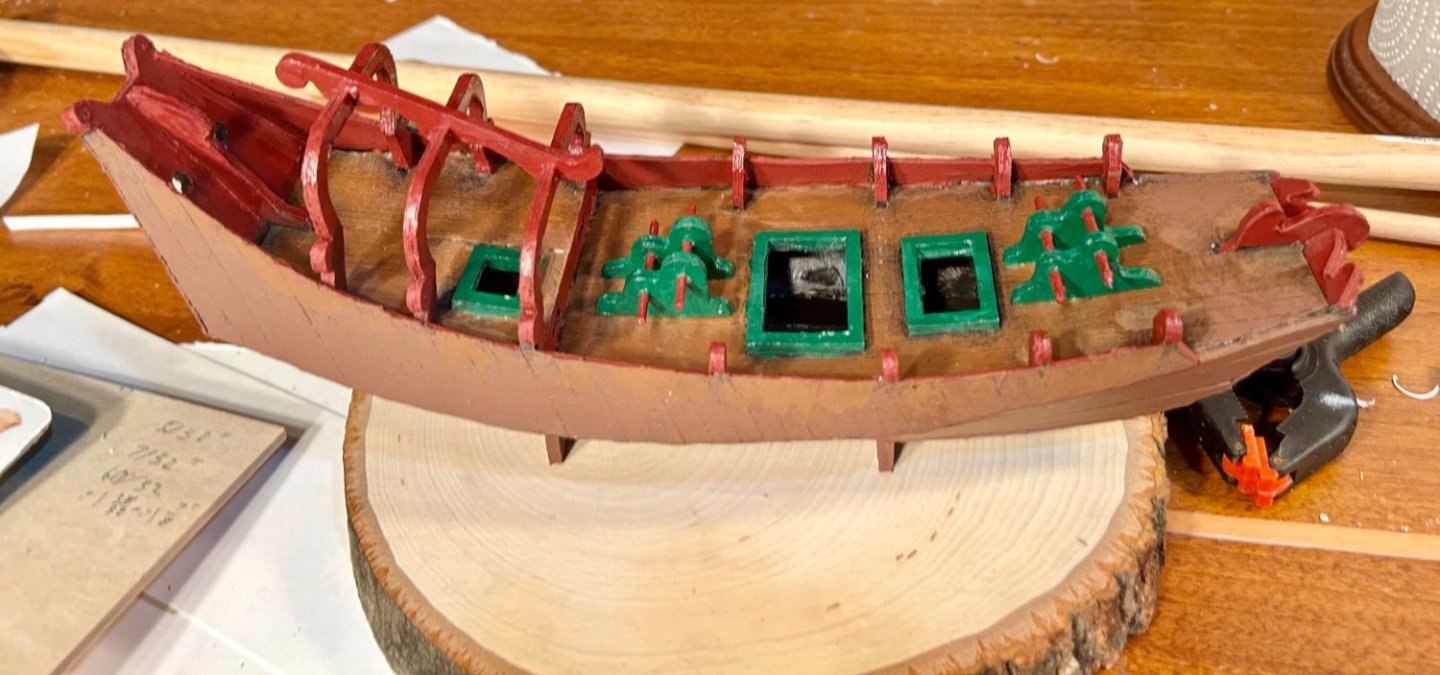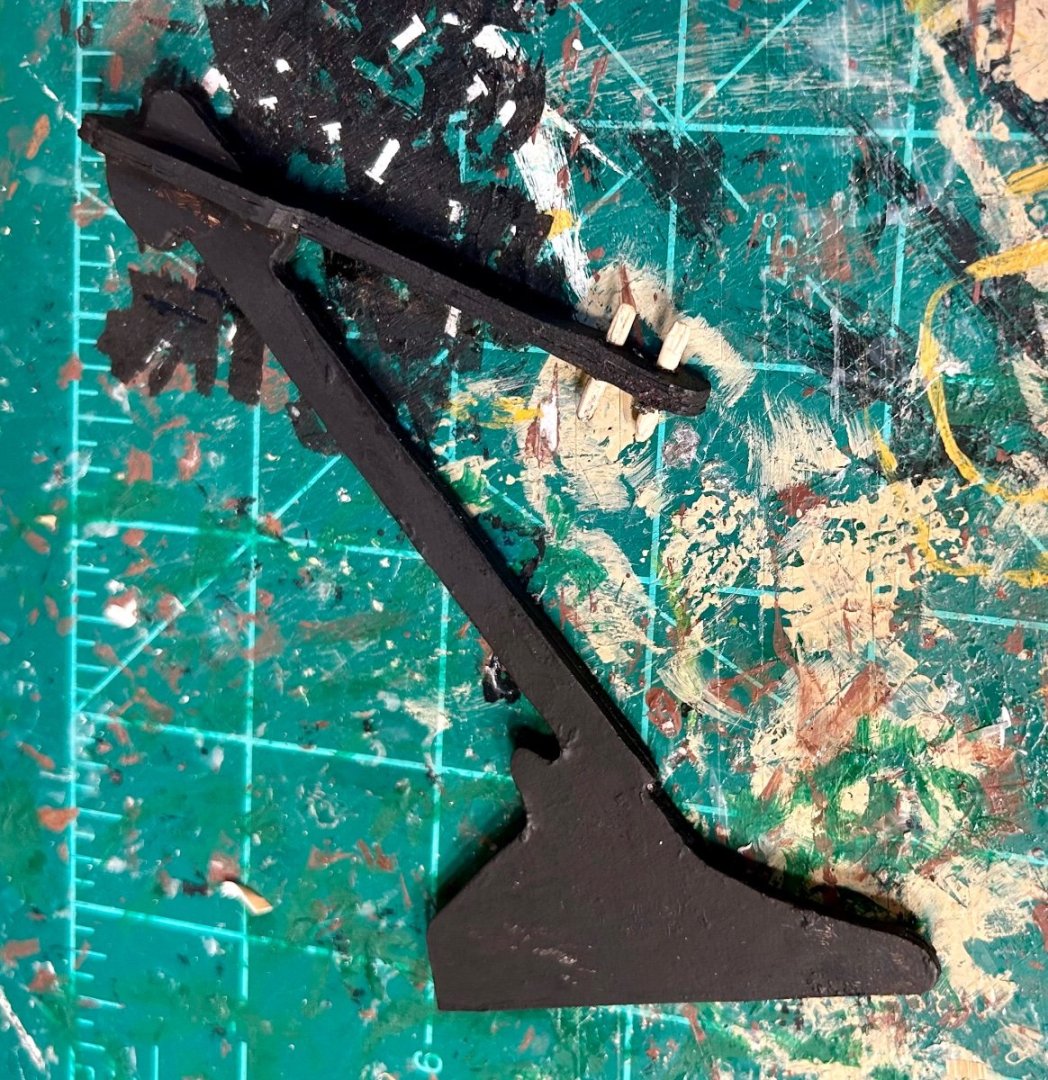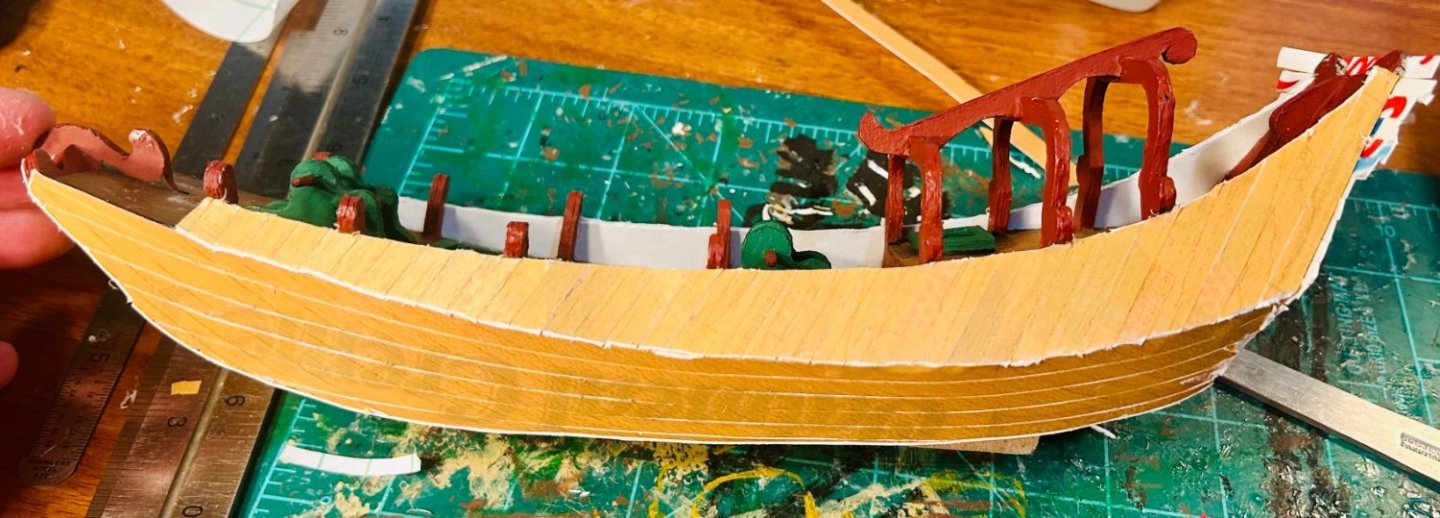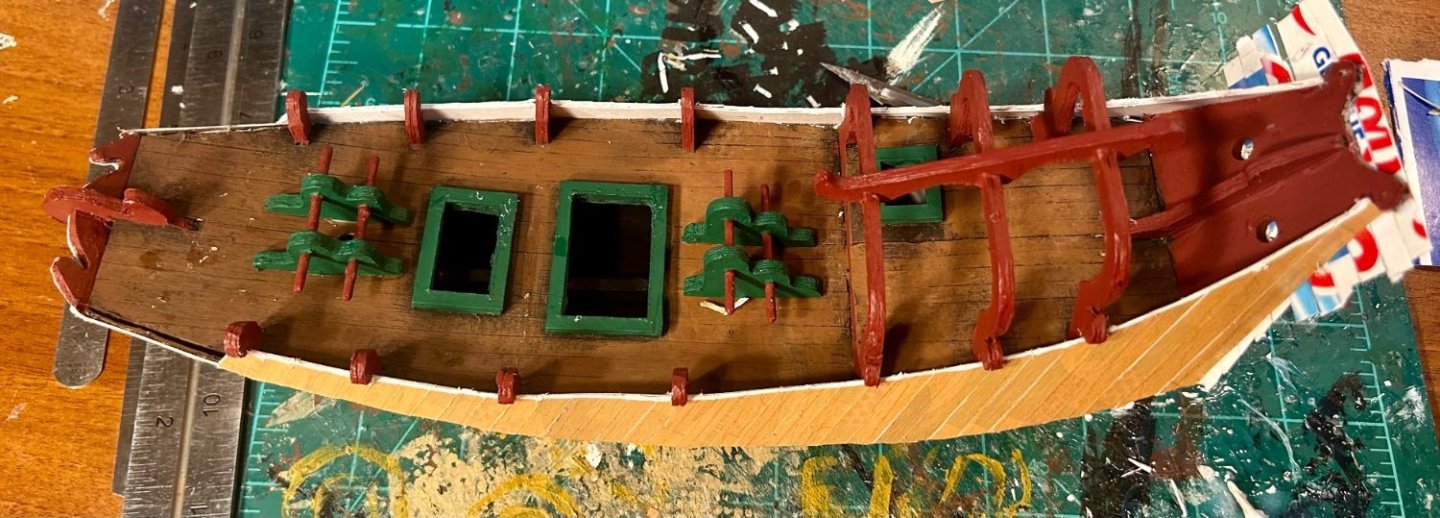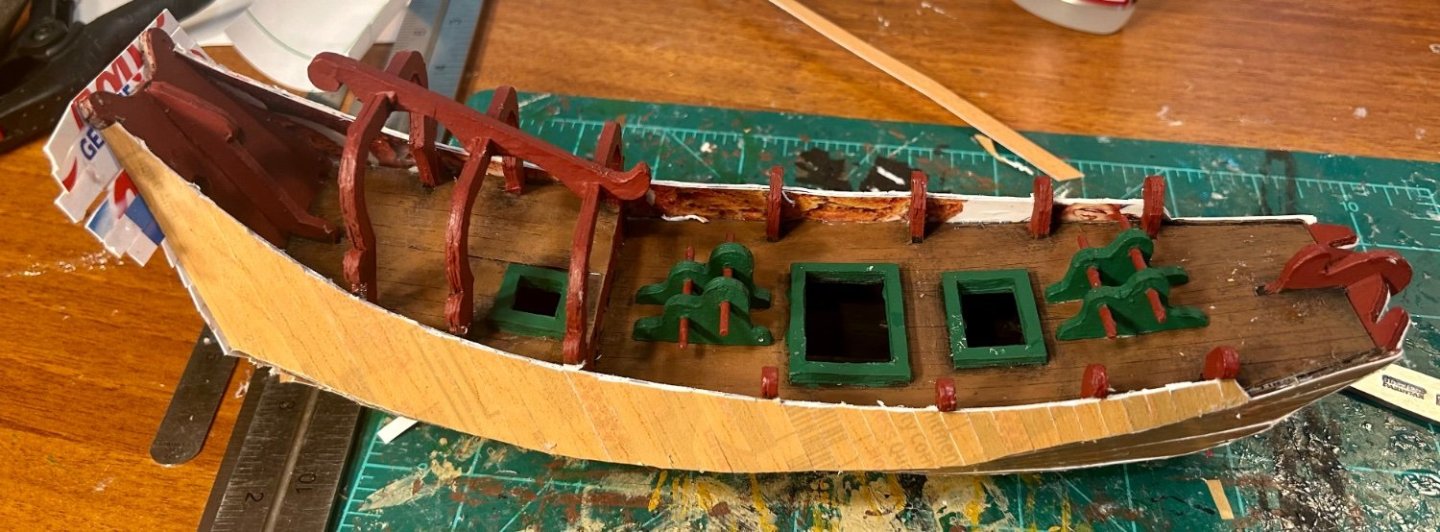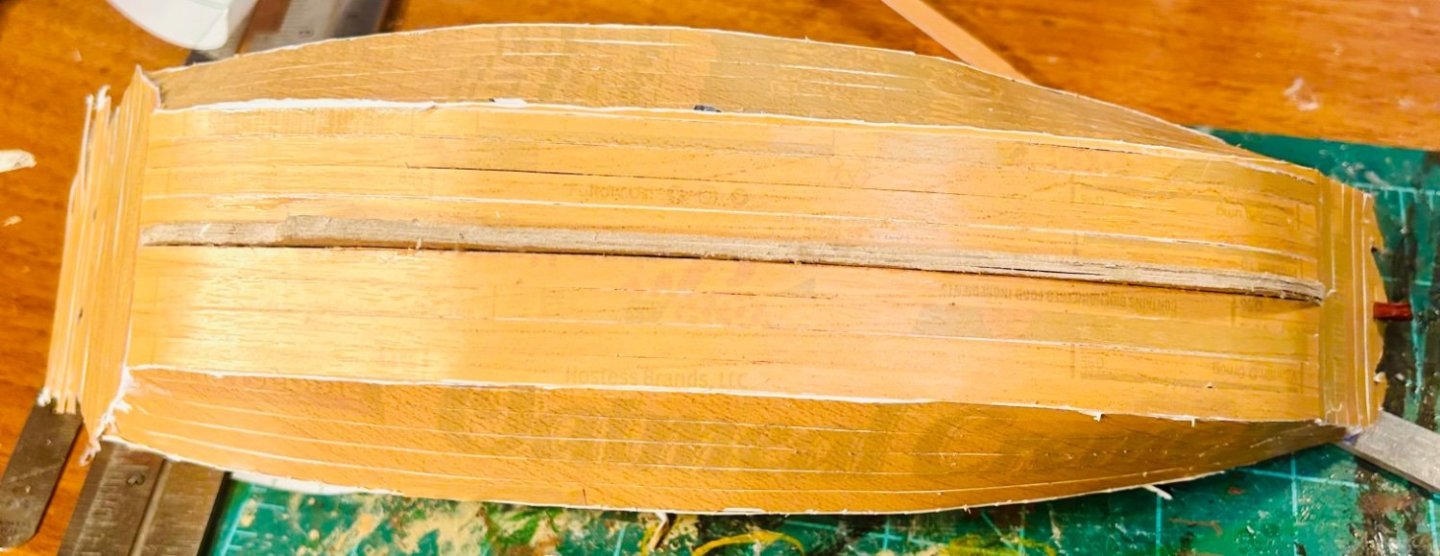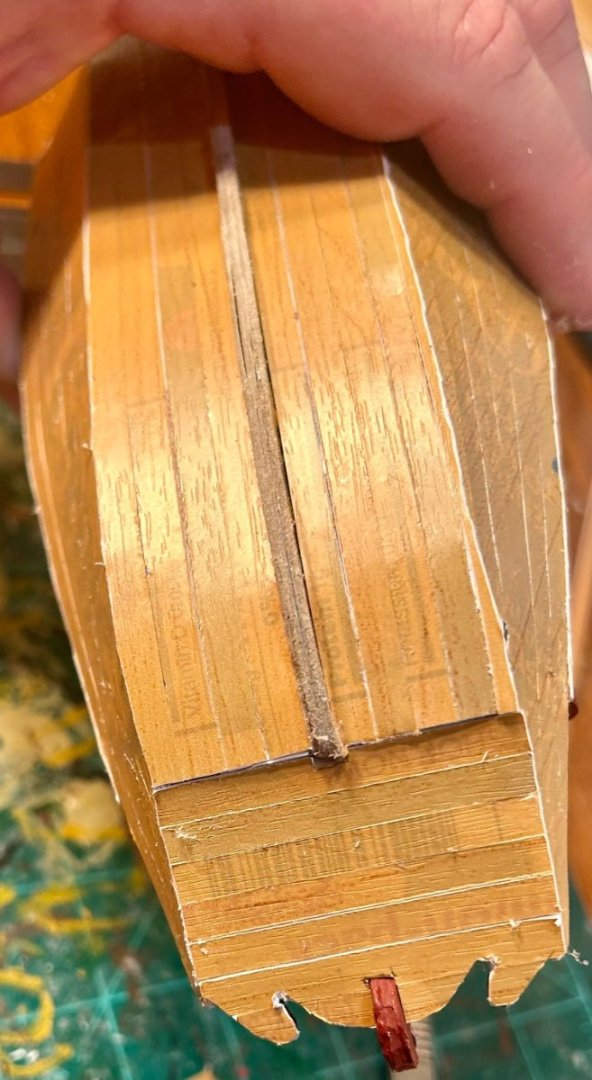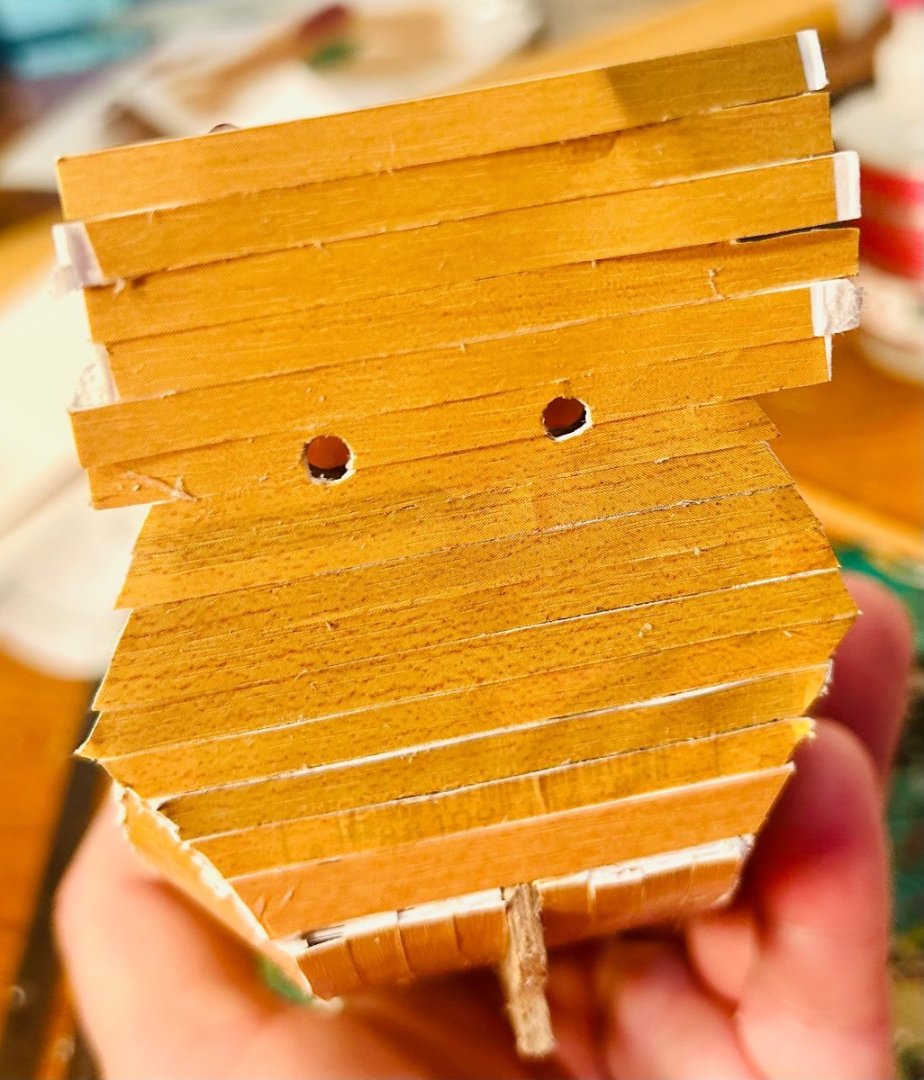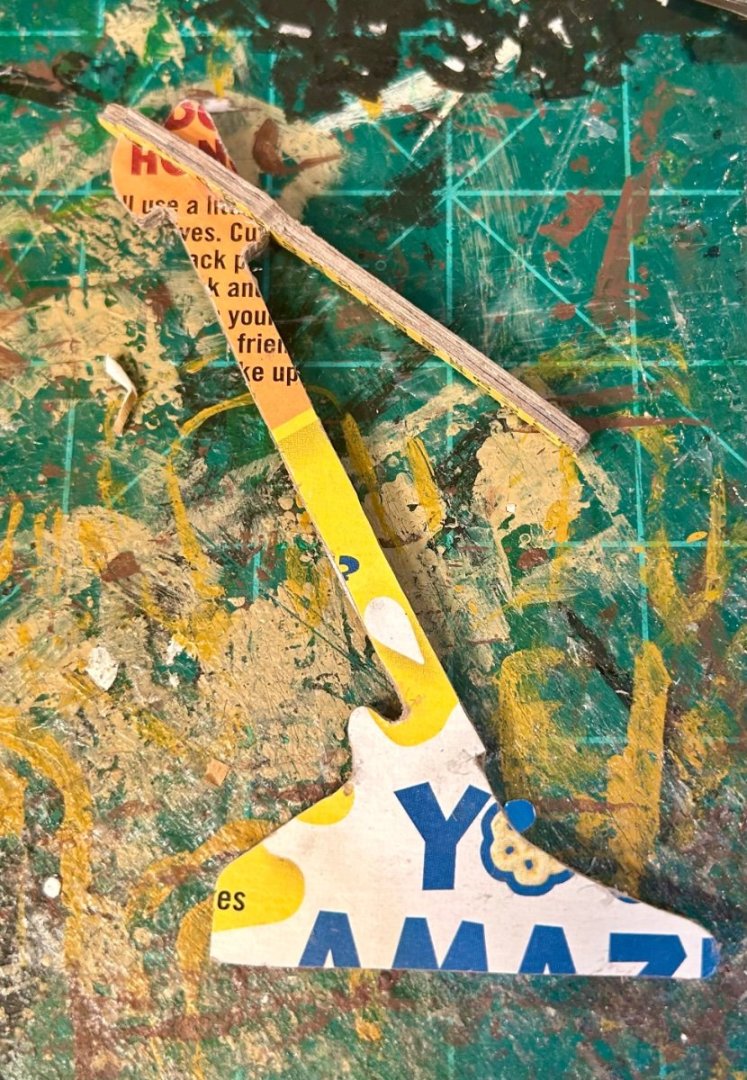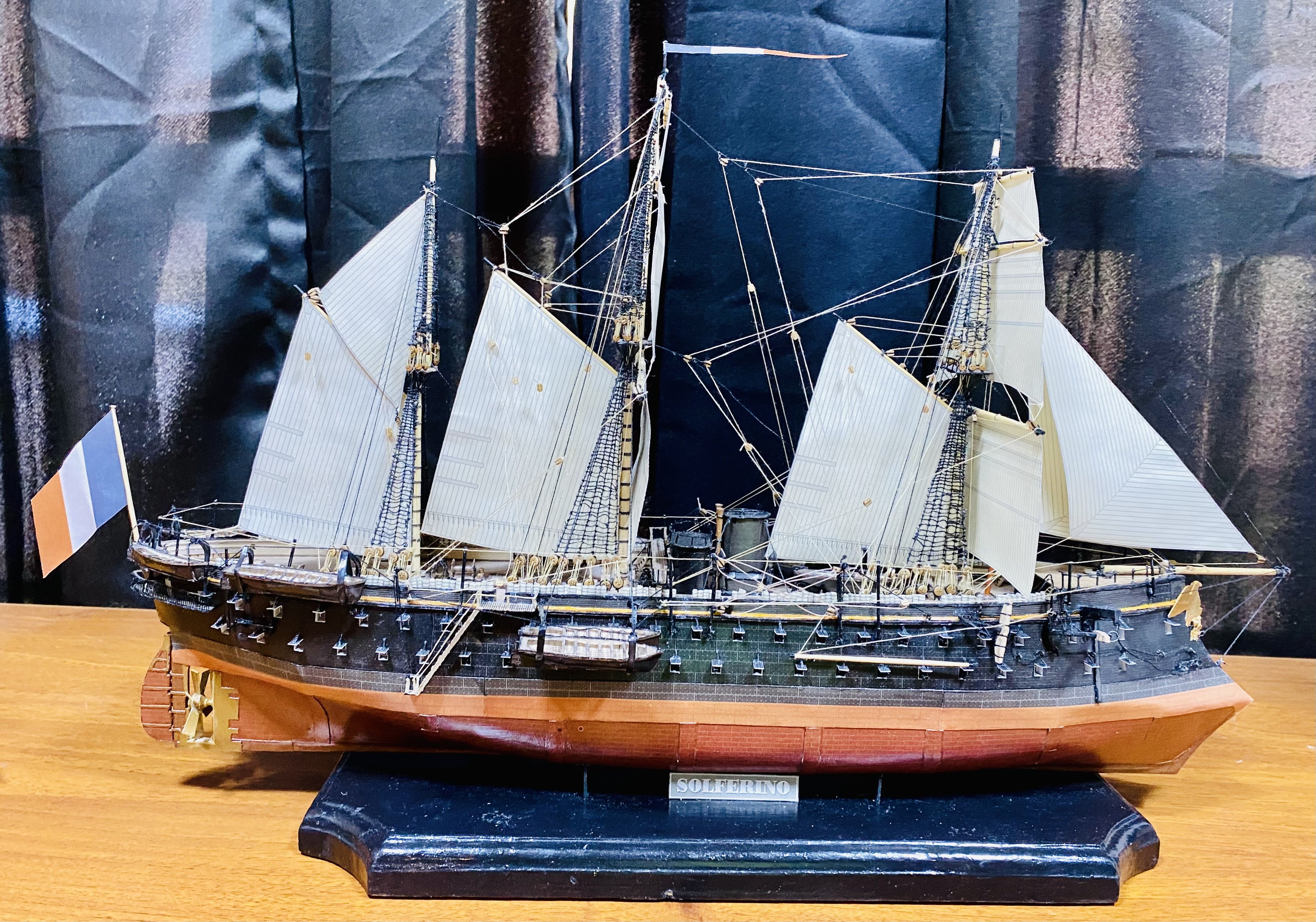
GrandpaPhil
NRG Member-
Posts
6,037 -
Joined
-
Last visited
Content Type
Profiles
Forums
Gallery
Events
Everything posted by GrandpaPhil
-
Victory is looking good! John McKay’s “The 100-Gun Ship Victory” of the Anatomy of the Ship series has been an invaluable reference to me in my Victory build. It has complete plans of the Victory. Copper tape works very well for me. They sell it for electricians cheaper than they do for modelers. I use that tape and a pounce wheel when I copper hulls. The pounce wheel is to make rivets.
- 33 replies
-
- Victory
- DeAgostini
-
(and 1 more)
Tagged with:
-
Thank you both very much! I was able to finish so quickly because the plans were from one of Amati’s beginners kits. There were fewer than 50 pieces if you bought this in kit format. I spent close to 30 hours cutting out and layering pieces of card to get that point. Once I did, I just assembled and painted. Then, I added the rest of the planking and repeated. One advantage to working with card is that bending it is a lot easier than bending wood. The masts took a couple hours to carve. But, the rigging was really simple compared to the models I’m used to. Also, I took holiday vacation time for Christmas and New Year’s for model building time. This was a fun build. It came out really nicely. I am happy with it. My first finished model of 2024!
-
And, done: 60 hours and $25 later. This was a quick and fun build. I embellished on the Amati plans a little bit. I figured out my thicknesses finally for wood plans to card conversion. The only real problem I ran into was trying to mark the waterline because this is a flat bottomed boat and it was so low. But, I got creative and figured it out. This is my third completed scratch build. Thank you to all who dropped by. Thank you all who either commented or hit the “like” button! Happy New Year!
-
Welcome!
-
One set of sails: The last wood pieces are the spars. In addition to the plans, in that model box were wood for the spars, the sail cloth seen above, the rigging line and the blocks. I’m going to use the wood and all of the above rigging items for this model. I love junkyard model boxes if there is something I can do with them. There are 13 spars that need made and painted. Then I will decide how I want to attach them to the sails.
-
The masts are permanently installed: The sails are cut out: I will sew them, make spars and install them tomorrow, along with the rigging. The last pieces that will need made are two pennants.
-
Hello & HNY on 123123 from Philadelphia
GrandpaPhil replied to ChiefScienceOfficerDrew's topic in New member Introductions
Drew, Welcome and Happy New Year! Bashing to us means modifying a kit.- 11 replies
-
- racing sailboats
- commercial ships
-
(and 1 more)
Tagged with:
-
Thank you very much! The Good Fortune now has cargo and masts: The cargo will be lashed down shortly and the masts will be painted soon.
-
Thank you both very much! This is an interesting subject to build. This looks like someone’s workboat to me. This would have been their equivalent of my truck. So, I decided to name it “Good Fortune”. That is a good name for it. Speaking of being a workboat, here are the barrels on their way:
-
The hull is about done: The rudder is about ready to be attached: I need to finish touchups, add a railing, seal everything and then attach the rudder. In Amati’s ad for the new version of this model, it shows barrels stowed atop the hatches. That look appeals to me, so I bought a dowel rod at Hobby Lobby a couple days ago to make barrels from. Here shortly it will be time to make a couple masts, some spars and some sails.
-
The interior is fully painted now. It just needs final sealed and highlighted. The outside is base-coated and the base is mostly done. The rudder is completely assembled and just needs painted prior to installation.
-
Keith, Thank you very much! Thank you to all who have hit the “Like” button, or just stopped by! The second planking is on: I’m waiting on the stern to dry so I can trim it properly: The rudder is mostly assembled too: Next up is to finish trimming, sealing and painting. Then it will be time to make the stand, mount the rudder, make and install the masts, make spars, make sails, install sails and rig the model. This one is nearly done.
About us
Modelshipworld - Advancing Ship Modeling through Research
SSL Secured
Your security is important for us so this Website is SSL-Secured
NRG Mailing Address
Nautical Research Guild
237 South Lincoln Street
Westmont IL, 60559-1917
Model Ship World ® and the MSW logo are Registered Trademarks, and belong to the Nautical Research Guild (United States Patent and Trademark Office: No. 6,929,264 & No. 6,929,274, registered Dec. 20, 2022)
Helpful Links
About the NRG
If you enjoy building ship models that are historically accurate as well as beautiful, then The Nautical Research Guild (NRG) is just right for you.
The Guild is a non-profit educational organization whose mission is to “Advance Ship Modeling Through Research”. We provide support to our members in their efforts to raise the quality of their model ships.
The Nautical Research Guild has published our world-renowned quarterly magazine, The Nautical Research Journal, since 1955. The pages of the Journal are full of articles by accomplished ship modelers who show you how they create those exquisite details on their models, and by maritime historians who show you the correct details to build. The Journal is available in both print and digital editions. Go to the NRG web site (www.thenrg.org) to download a complimentary digital copy of the Journal. The NRG also publishes plan sets, books and compilations of back issues of the Journal and the former Ships in Scale and Model Ship Builder magazines.


